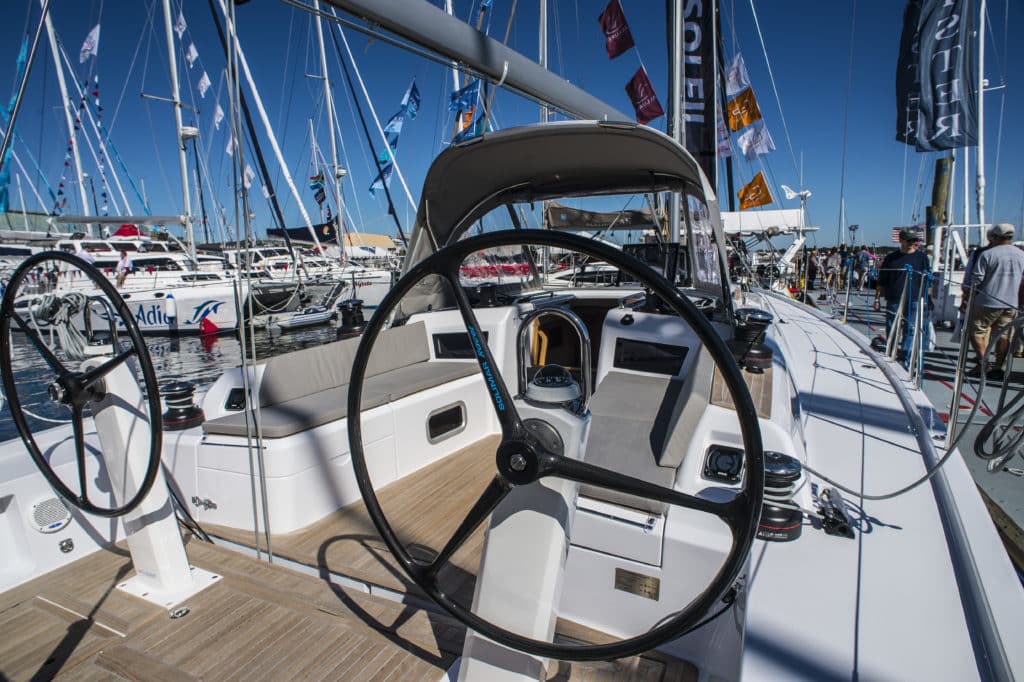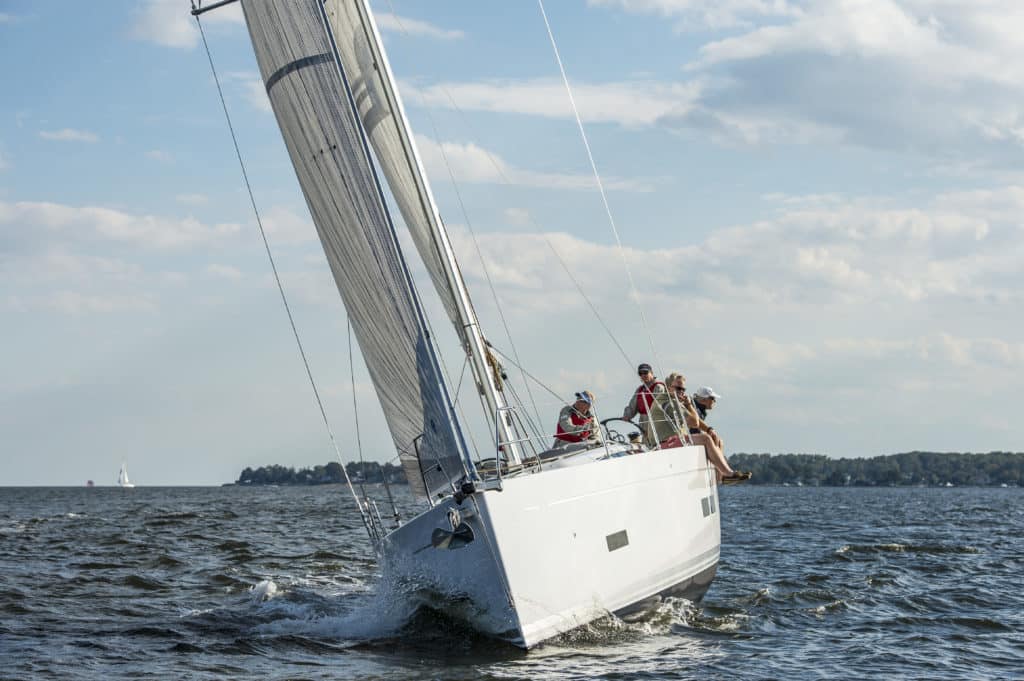Best Crossover: Grand Soleil 43
Every year the crossover category vexes the BOTY judges. It’s in this genre that the evolution of the racer/cruiser creeps forward ever so discreetly. Refinements are deep in the bowels, under floorboards and behind headliners. The boats are lighter and better built, the systems more streamlined, and tweaks in cockpit and cabin layouts are subtle. The best of the crossovers, however, is always the one that sails the best in light wind. It’s also the one that can truly be raced by a team, without them tripping over one another or standing awkwardly over primaries, and swiftly cruised shorthanded.
For the judges, after sailing a handful of comparable crossovers, the standout at the dock and on the water was the Grand Soleil 43, a sharp-looking 43-footer from Italy. Claudio Maletto, a little-known but talented designer from early Italian America’s Cup campaigns, is responsible for its lines, so it’s no surprise that it sails hard on the wind like a high-angle IACC beauty.

The Grand Soleil 43 was introduced in Europe in 2012, but was subsequently modified with a composite keel grid, replacing stainless steel. Consequently, the boat has been trimmed to roughly 20,000 pounds. With a 6-foot-6-inch keel and 6,820 pounds in the T-bulb, the Grand Soleil 43 is plenty stiff, and the clean lines shed only a hint of a wake during its test sail.
While observing it from off the boat, Stewart commented aloud that it looked “real sexy” going through the water. A tall Sparcraft aluminum rig and 1,122 square feet of high-quality North Sails Spectra demo sails helped. When the judges got on board, their suspicions were validated: It sailed and handled as well as its looks had promised.
“It’s definitely a performance cruiser, but it’s perfectly set up for racing,” commented Tom Rich. “You can reach the winches, it’s got all the accommodations … a nice, light interior, and the boat sails incredibly well.”
As with most crossovers, the cockpit design is defined by the volume and headroom of the aft cabins, but in an ergonomic exercise of inches, Maletto somehow kept the cabins roomy while minimizing the cockpit seating width, allowing excellent access to the primary winches (which were electric on the test boat). Sail trimmers, both main and jib, will appreciate the setup of all the sail controls.
“The biggest part was access to the mainsheet,” said Allen. “So many other boats are set up for the helmsman to have the sheet, so everything gets pushed back near the steering wheel, but this boat has space for a main trimmer to sit comfortably, with access to everything. It’s the same for the jib trimmers; we didn’t have to lean too far over the coaming to reach the winches.”
Stewart preferred the Grand Soleil 43’s smaller carbon wheels, mounted on modest-size pedestals, which made moving around the helm area easy. Tacking the jib was easy too, said Allen, with good traction on the teak flooring (standard) for sheet-tailing and high-tailing it to the high side.
The judges praised the craftsmanship of the interior as well. They all reported that the cabinetry and systems were meticulously finished, and the three-cabin, double-head layout had everything an owner would need for an extended cruise.
The Grand Soleil 43 is one boat they’d all happily race from Newport to Bermuda, or sail to the Caribbean for a full winter season of racing and intermittent cruises. The perfect crossover is hard to define, they said, but the Grand Soleil 43 is as close as they’ve experienced since builders started putting the emphasis on performance before cruising.
















